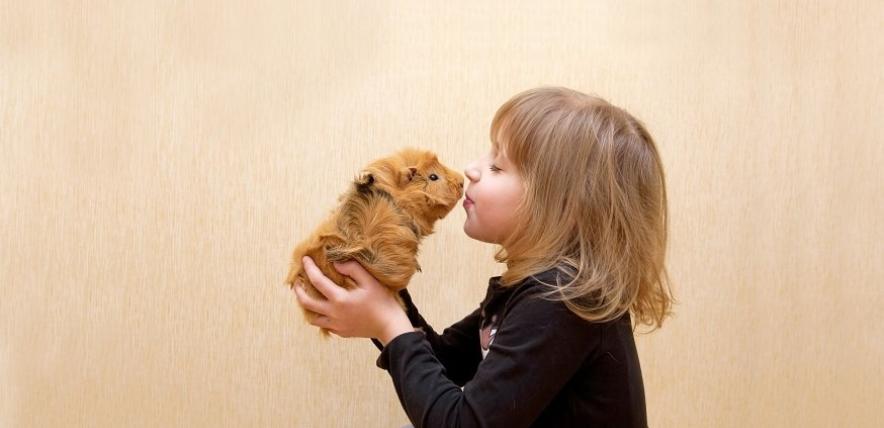Research by the PDSA (People’s Dispensary for Sick Animals) in 2022 found that more than half of households now own a pet. Households with children are among the most likely to have either a dog, cat or rabbit. Children love animals, they’re cute, fluffy and can teach your child:
- Responsibility – looking after a pet means considering what a pet needs and doing it every day.
- Empathy – learning to care for a pet encourages your child to think about their pet’s feelings.
- Learning – learning about their pet’s food and exercise needs can teach maths skills, learning about correct foods can teach about nutrition, grooming and changing bedding or litter teaches about animal health and welfare.
- Comfort and companionship – a pet is a brilliant friend for a child – they never judge!
- Healthy lifestyle – taking a dog for a walk or getting out in the garden to play with a rabbit all encourage being outside in nature and learning about the environment.
- Lowers blood pressure – stroking pets has been shown to make us feel more happy and calm.
- Reduces loneliness – a pet is always here for us, even when we’ve had a bad day!
Pets are great friends but they can be time consuming and will live up to 15 years old for dogs and cats, which needs to be considered
If you are thinking about a pet for your family this post written by Written by Melanie Pilcher for the Early Years Alliance can help you decide if a pet is for you and what pets are most suitable for young children.
Pets in the home
If you choose to have a pet, it is vital to do your research. Ideally you should choose a pet that can be handled by your child occasionally and one that they can help to look after. Any animal that may bite or carry the risk of germs should be avoided.
You also need to consider the pet’s health needs – including vet fees, food, bedding, and other care. Pet insurance is a must, but things like food and bedding also incur a cost.
Avoid:
- Caged birds such as budgerigars can carry diseases.
- Reptiles and amphibians pose a risk of salmonella poisoning to vulnerable adults and children under five if they touch them.
- Mice, gerbils and hamsters are all usually nocturnal and can be timid around children.
Consider:
- Rabbits can make a good pet for under 5’s, but they will need to get used to being handled when they are still young.
- Guinea pigs like to be handled and are friendly creatures. They make some interesting noises that will attract children’s attention.
- Fish cannot be handled but are interesting to observe and evoke a sense of calm. They are also low maintenance.
- Rats are excellent pets for children. They are clever and respond well to being handled. They do have some of the disadvantages of other small rodents however – but remember that a domestic rat is very different to a wild rat!
If you are lucky enough to have space outdoors there are other animals you could consider keeping for example chickens or ducks. Whatever animal you choose, health and safety for is paramount for both the children and the animal itself. Think about who will look after the pet if you are away from home, how you will fund their care and what your reasons are for having a pet in the first place.
Connecting with animals elsewhere
If you are not able to have a pet, there are rural and city farms you can visit that will give children safe animal encounters. Locally we are lucky enough to have:
It is also possible to attract animals to even the smallest garden. A wildlife camera will help you to capture images of nocturnal visitors that children can then learn more about and help to create an inviting environment for.
Encountering animals while you are out with children on a walk is a good opportunity to instil some safe behaviour. If you meet someone walking their dog, remind children not to reach out and attempt to pet the dog without first asking. If a dog is off its lead and runs towards a child, it can be quite scary for them. Encourage your child to stand still and not scream and shout as this can incite an aggressive dog, or further encourage a dog that just wants to be friends.
If passing a field where there are horses or large farm animals, children should learn not to attempt to stroke them. Many larger animals can bite, often assuming that food is being offered in an outstretched hand.
Children with SEND
Most of us will know about therapy and assistance animals – usually, though not always, dogs – that support adults and children. Organisations such as Guide Dogs for the Blind, which provides buddy dogs for children with sight loss, and Therapy Dogs Nationwide, who visit schools and hospitals, make a huge difference to many children and their families.
Contact with horses has many benefits for children with ADHD, autism, anxiety, or for children who have suffered trauma. This benefit is not unique to horses, but there is no doubt that horses have a special affinity for children with SEND.
Written by Melanie Pilcher for the Early Years Alliance. Melanie is responsible for resources that support best practice in all matters relating to the EYFS.



